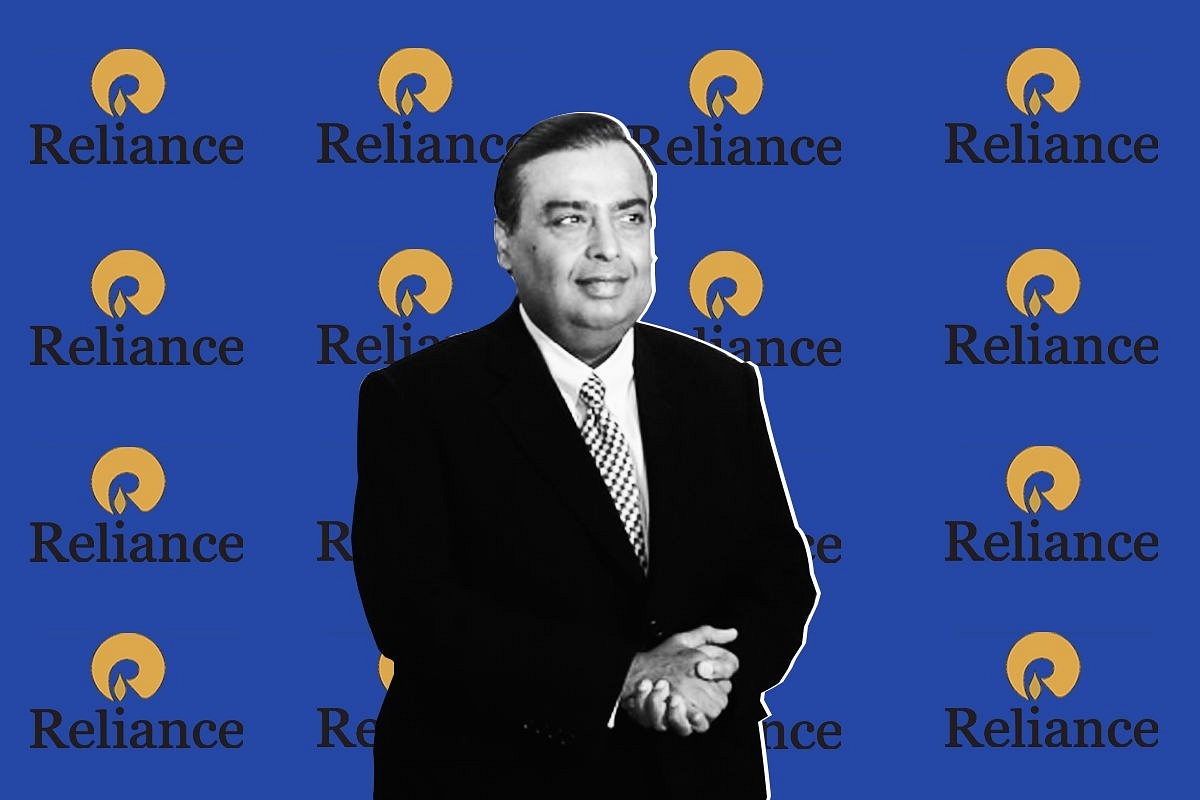Business
As Ambani Moves To Convert RIL Into Holding Company, Conglomerates Have A New Template For Growth
- RIL’s successful shift from a single-company conglomerate to a holding company with shareholding interests in more focused outfits should serve as a template for other conglomerates.

Reliance Industries chairman Mukesh Ambani.
After successfully becoming a zero-net-debt company this year by selling stakes to the likes of Facebook and Google in Jio Platforms, Reliance Industries Limited (RIL) is now looking to do the same with Reliance Retail and its oil-to-chemicals business.
A Business Standard report says that Mukesh Ambani’s flagship company is seeking to entice Facebook and KKR, both early bird investors in Jio Platforms, to buy into Reliance Retail. As for the oil-to-chemicals business (O2C), plans are already afoot to hive it off into a separate company styled Reliance O2C, which will include all the refining, petrochemicals and related manufacturing and retail marketing assets, but minus the oil exploration business.
At one point, Saudi Aramco was said to be interested, but that is not so sure now. But there is little doubt that the hive-off will happen to some global party at some point.
The overall RIL gameplan is thus crystal clear and provides a template for other, more diverse, conglomerates like the Tatas to follow. Mukesh Ambani is unlocking value by making each business more focused and more appealing to investors who are now sure where they are putting their money.
Earlier, if they wanted a share of the action in retail, they had to buy the whole bundle called Reliance Industries, from O2C to retail, telephony and tech. Now they can buy whichever part they want, since each business is likely to be listed on the stock markets separately.
The separation of businesses has already brought a windfall for the promoters and shareholders of Reliance Industries, as the company has become a zero-net-debt entity. This means it can now leverage its balance-sheet to borrow at even finer rates and on scale, both from the global and local markets. Even better, it can use its own high valuations to raise more equity at huge premia.
After the massive debt reduction, RIL is valued at a massive Rs 13.67 lakh crore, or around $185 billion at current exchange rates. This would place RIL among the top 50 global companies by market value. Even though RIL is largely focused on the Indian market, it is a global company in terms of financial heft. It can expand globally with the kind of domestic market power it commands.
The future, of course, will not be about RIL, but its three major spinoffs: Jio Platforms, Reliance Retail and Reliance O2C.
After these companies are floated separately on the stock markets, RIL itself will become a quasi-holding company for the promoters, with its own valuation being derived from the equity stakes it holds in the three listed (or underlying) companies. Its role will thus get reduced to capital allocation among its subsidiaries and associate companies, and it could lose some of its current value. This value will migrate from holding company to subsidiaries.
RIL’s successful shift from a single-company conglomerate dabbling in unrelated businesses to a holding company with shareholding interests in more focused outfits should serve as a template for other conglomerates like the Tatas, who are grappling with complex holding structures.
Perhaps a good idea for the Tatas would be to list Tata Sons, and use the equity proceeds raised to boost shareholdings in many of its core companies. This would be better than holding these stakes through layers of group companies or investment fronts.
While some of this is already happening, the current structure, where charities hold the bulk of the equity in Tata Sons, is not ideal. Trusts should not run commercial enterprises. Ultimately, Tata Sons needs to become a key Tata holding company.
Listing Tata Sons will also allow the Pallonji Mistry Group to exit by offloading their 18-19 per cent stake on the markets.
Support Swarajya's 50 Ground Reports Project & Sponsor A Story
Every general election Swarajya does a 50 ground reports project.
Aimed only at serious readers and those who appreciate the nuances of political undercurrents, the project provides a sense of India's electoral landscape. As you know, these reports are produced after considerable investment of travel, time and effort on the ground.
This time too we've kicked off the project in style and have covered over 30 constituencies already. If you're someone who appreciates such work and have enjoyed our coverage please consider sponsoring a ground report for just Rs 2999 to Rs 19,999 - it goes a long way in helping us produce more quality reportage.
You can also back this project by becoming a subscriber for as little as Rs 999 - so do click on this links and choose a plan that suits you and back us.
Click below to contribute.
Latest